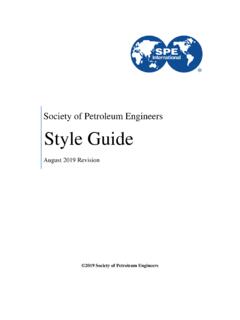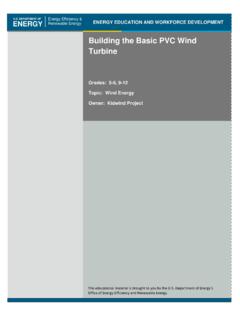Transcription of The Problem of Social Cost - Iowa State University
1 The Problem of Social CostAuthor(s): R. H. CoaseSource: Journal of Law and Economics, Vol. 3 (Oct., 1960), pp. 1-44 Published by: The University of Chicago PressStable URL: : 22/04/2010 14:28 Your use of the JSTOR archive indicates your acceptance of JSTOR's Terms and Conditions of Use, available JSTOR's Terms and Conditions of Use provides, in part, that unlessyou have obtained prior permission, you may not download an entire issue of a journal or multiple copies of articles, and youmay use content in the JSTOR archive only for your personal, non-commercial contact the publisher regarding any further use of this work. Publisher contact information may be obtained copy of any part of a JSTOR transmission must contain the same copyright notice that appears on the screen or printedpage of such is a not-for-profit service that helps scholars, researchers, and students discover, use, and build upon a wide range ofcontent in a trusted digital archive.
2 We use information technology and tools to increase productivity and facilitate new formsof scholarship. For more information about JSTOR, please contact University of Chicago Press is collaborating with JSTOR to digitize, preserve and extend access to Journalof Law and Journal of LAW c ECONOMICS VOLUME III OCTOBER 1960 THE Problem OF Social COST R. H. COASE University of Virginia I. THE Problem TO BE EXAMINED1 THIS paper is concerned with those actions of business firms which have harmful effects on others. The standard example is that of a factory the smoke from which has harmful effects on those occupying neighbouring properties. The economic analysis of such a situation has usually proceeded in terms of a divergence between the private and Social product of the fartory, in which economists have largely followed the treatment of Pigou in The Economics of Welfare.
3 The conclusions to which this kind of analy?is seems to have led most economists is that it would be desirable to make the owner of the factory liable for the damage caused to those injured by the smoke, or alternatively, to place a tax on the factory owner varying with the amount of smoke pro- duced and equivalent in money terms to the damage it would cause, or finally, to exclude the factory from residential districts (and presumably from other 1 This article, although concerned with a technical Problem of economic analysis, arose out of the study of the Political Economy of Broadcasting which I am now conducting. The argument of the present article was implicit in a previous article dealing with the Problem of allocating radio and television frequencies (The Federal Communications Commission, 2 J. Law & Econ. [1959]) but comments which I have received seemed to suggest that it would be desirable to deal with the question in a more explicit way and without reference to the original Problem for the solution of which the analysis was de- veloped.)
4 2 THE JOURNAL OF LAW AND ECONOMICS areas in which the emission of smoke would have harmful effects on others). It is my contention that the suggested courses of action are inappropriate, in that they lead to results which are not necessarily, or even usually, desirable. II. THE RECIPROCAL NATURE OF THE Problem The traditional approach has tended to obscure the nature of the choice that has to be made. The question is commonly thought of as one in which A inflicts harm on B and what has to be decided is: how should we restrain A? But this is wrong. We are dealing with a Problem of a reciprocal nature. To avoid the harm to B would inflict harm on A. The real question that has to be decided is: should A be allowed to harm B or should B be allowed to harm A? The Problem is to avoid the more serious harm. I instanced in my previous article2 the case of a confectioner the noise and vibrations from whose ma- chinery disturbed a doctor in his work.
5 To avoid harming the doctor would inflict harm on the confectioner. The Problem posed by this case was essential- ly whether it was worth while, as a result of restricting the methods of produc- tion which could be used by the confectioner, to secure more doctoring at the cost of a reduced supply of confectionery products. Another example is afforded by the Problem of straying cattle which destroy crops on neighbour- ing land. If it is inevitable that some cattle will stray, an increase in the sup- ply of meat can only be obtained at the expense of a decrease in the supply of crops. The nature of the choice is clear: meat or crops. What answer should be given is, of course, not clear unless we know the value of what is obtained as well as the value of what is sacrificed to obtain it. To give another example, Professor George J. Stigler instances the contamination of a If we assume that the harmful effect of the pollution is that it kills the fish, the question to be decided is: is the value of the fish lost greater or less than the value of the product which the contamination of the stream makes possible.
6 It goes almost without saying that this Problem has to be looked at in total and at the margin. III. THE PRICING SYSTEM WITH LIABILITY FOR DAMAGE I propose to start my analysis by examining a case in which most econo- mists would presumably agree that the Problem would be solved in a com- pletely satisfactory manner: when the damaging business has to pay for all damage caused and the pricing system works smoothly (strictly this means that the operation of a pricing system is without cost). A good example of the Problem under discussion is afforded by the case of straying cattle which destroy crops growing on neighbouring land. Let us sup- pose that a farmer and a cattle-raiser are operating on neighbouring proper- 2 Coase, The Federal Communications Commission, 2 J. Law & Econ. 26-27 (1959). 3 G. J. Stigler, The Theory of Price 105 (1952). THE Problem OF Social COST 3 ties.
7 Let us further suppose that, without any fencing between the properties, an increase in the size of the cattle-raiser's herd increases the total damage to the farmer's crops. What happens to the marginal damage as the size of the herd increases is another matter. This depends on whether the cattle tend to follow one another or to roam side by side, on whether they tend to be more or less restless as the size of the herd increases and on other similar factors. For my immediate purpose, it is immaterial what assumption is made about marginal damage as the size of the herd increases. To simplify the argument, I propose to use an arithmetical example. I shall assume that the annual cost of fencing the farmer's property is $9 and that the price of the crop is $1 per ton. Also, I assume that the relation between the number of cattle in the herd and the annual crop loss is as follows: Number in Herd Annual Crop Loss Crop Loss per Additional (Steers) (Tons) Steer (Tons) 1 1 1 2 3 2 3 6 3 4 !
8 0 4 Given that the is liable for the damage caused, the additional annual cost imposed on the cattle-raiser if he increased his herd from, say, 2 to 3 steers is $3 and in deciding on the size of the herd, he will take this into account along with his other costs. That is, he will not increase the size of the herd unless the value of the additional meat produced (assuming that the cattle-raiser slaughters the cattle), is greater than the additional costs that this will entail, including the value of the additional crops destroyed. Of course, if, by the employment of dogs, herdsmen, aeroplanes, mobile radio and other means, the amount of damage can be reduced, these means will be adopted when their cost is less than the value of the crop which they prevent being lost. Given that the annual cost of fencing is $9, the cattle-raiser who wished to have a herd with 4 steers or more would pay for fencing to be erected and maintained, assuming that other means of attaining the same end would not do so more cheaply.
9 When the fence is erected, the marginal cost due to the liability for damage becomes zero, except to the extent that an increase in the size of the herd necessitates a stronger and therefore more expensive fence because more steers are liable to lean against it at the same time. But, of course, it may be cheaper for the cattle-raiser not to fence and to pay for the damaged crops, as in my arithmetical example, with 3 or fewer steers. It might be thought that the fact that the cattle-raiser would pay for all crops damaged would lead the farmer to increase his planting if a cattle-raiser came to occupy the neighbouring property. But this is not so. If the crop was previously sold in conditions of perfect competition, marginal cost was equal 4 THE JOURNAL OF LAW AND ECONOMICS to price for the amount of planting undertaken and any expansion would have reduced the profits of the farmer.
10 In the new situation, the existence of crop damage would mean that the farmer would sell less on the open market but his receipts for a given production would remain the same, since the cattle- raiser would pay the market price for any crop damaged. Of course, if cattle- raising commonly involved the destruction of crops, the coming into existence of a cattle-raising industry might raise the price of the crops involved and farmers would then extend their planting. But I wish to confine my attention to the individual farmer. I have said that the occupation of a neighbouring property by a cattle- raiser would not cause the amount of production, or perhaps more exactly the amount of planting, by the farmer to increase. In fact, if the cattle-raising has any effect, it will be to decrease the amount of planting. The reason for this is that, for any given tract of land, if the value of the crop damaged is so great that the receipts from the sale of the undamaged crop are less than the total costs of cultivating that tract of land, it will be profitable for the farmer and the cattle-raiser to make a bargain whereby that tract of land is left un- cultivated.



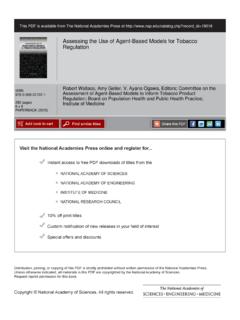
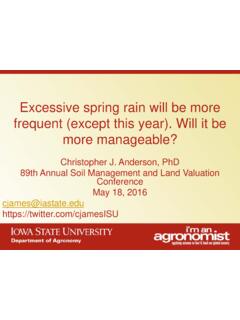

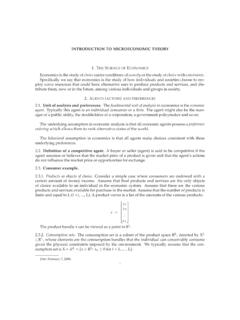
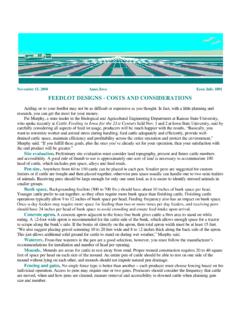


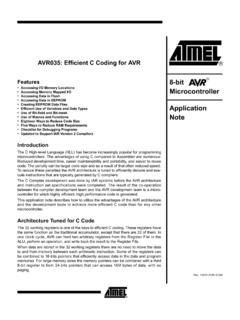
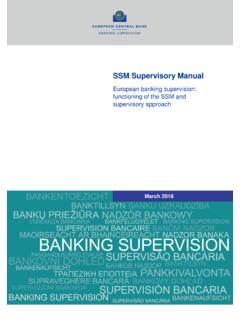
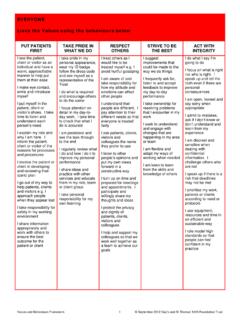
![arXiv:1512.00567v3 [cs.CV] 11 Dec 2015](/cache/preview/e/9/b/2/7/3/a/d/thumb-e9b273ad52b2edb6f94a58f5caa30476.jpg)
